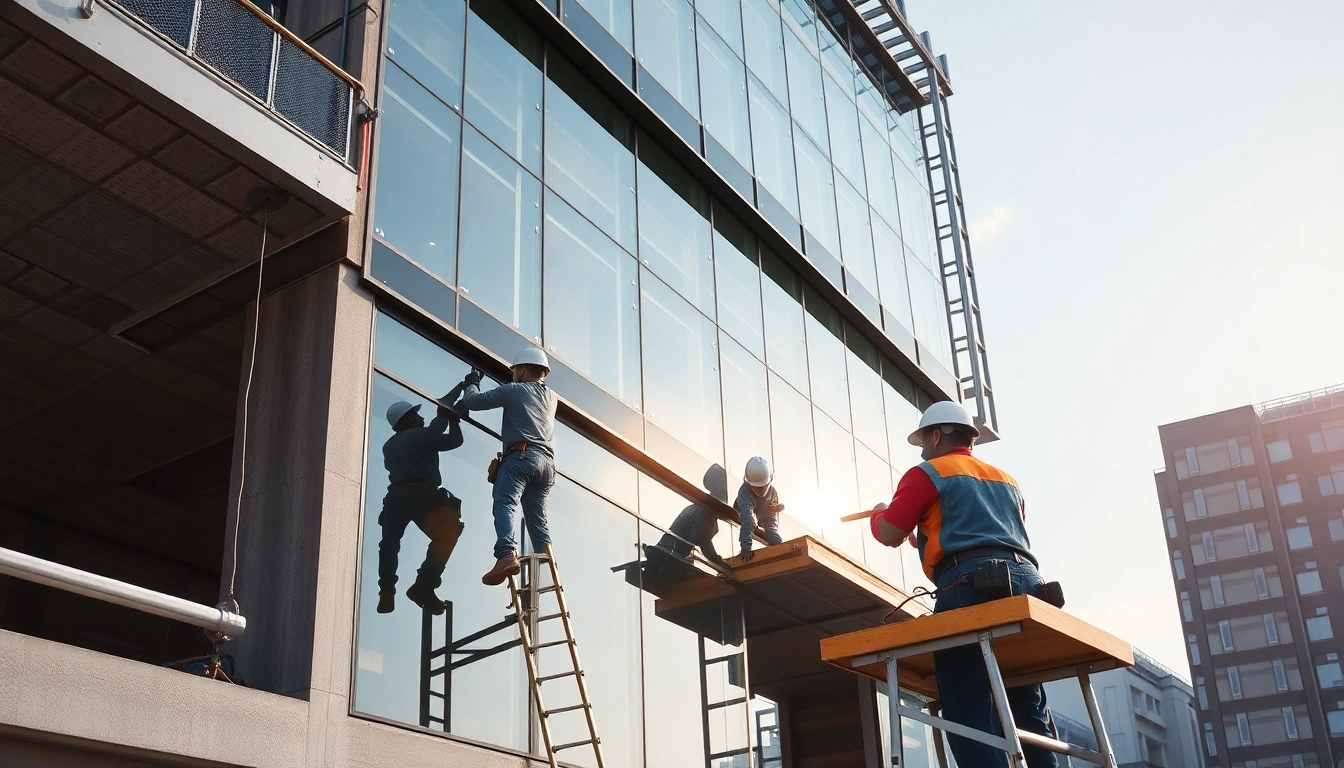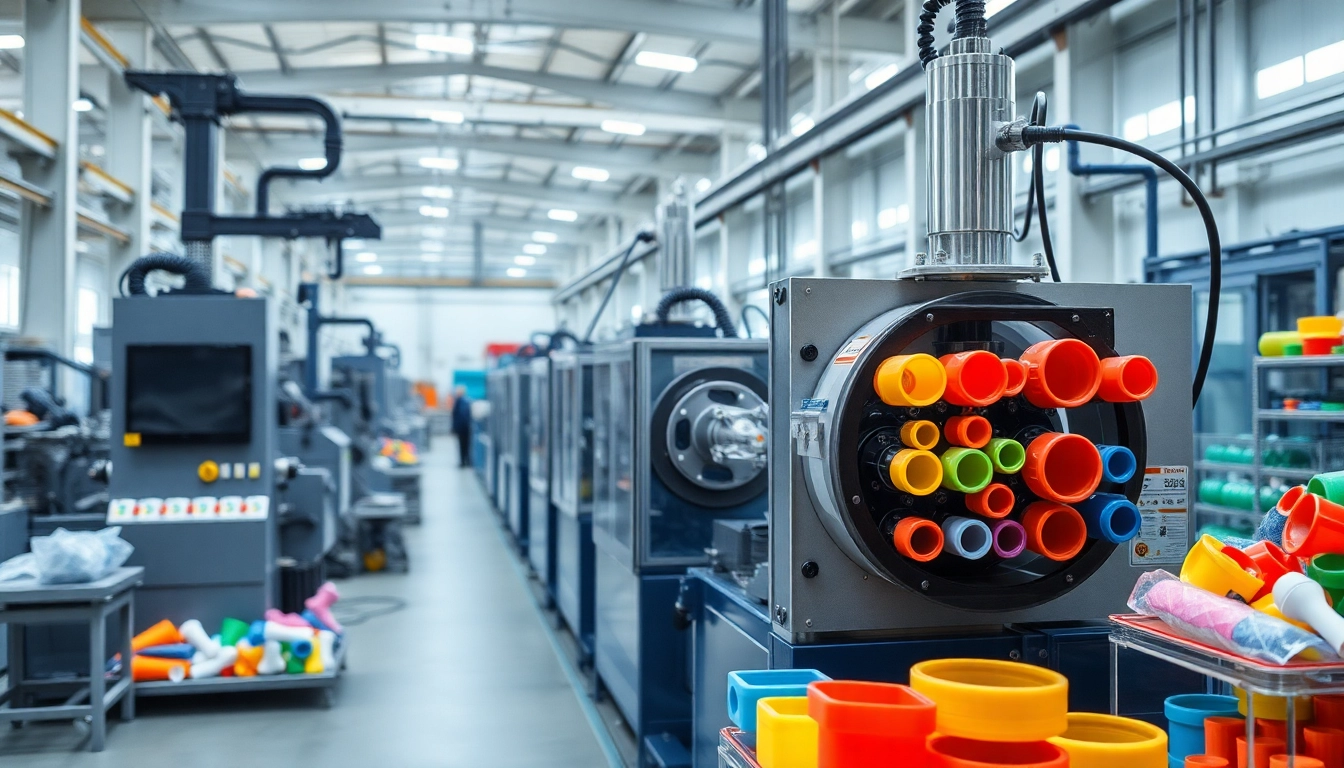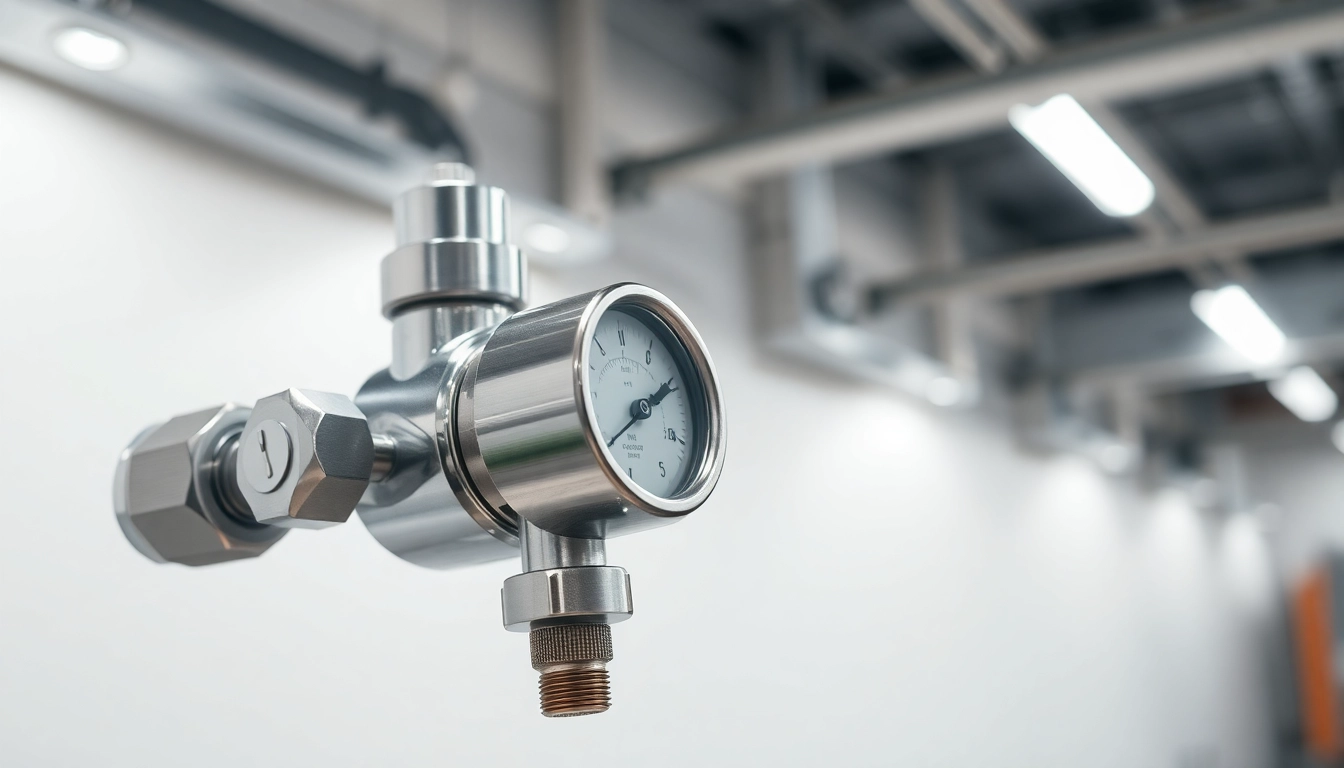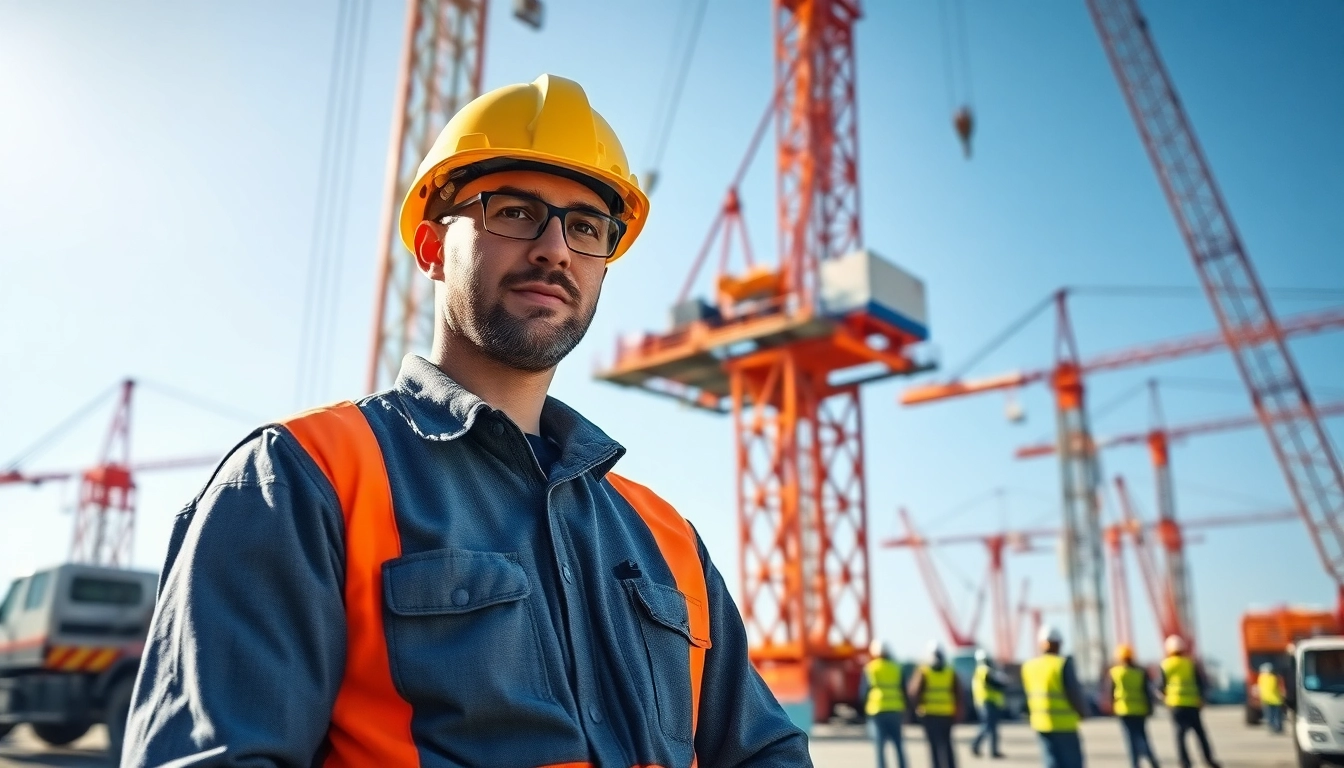Understanding Facade Installation
What Is a Facade in Construction?
A facade in construction refers to the exterior face of a building, which is key to both aesthetics and functionality. It embodies the architectural style and can significantly influence how a structure is perceived. Facades often incorporate various design elements, such as windows, doors, materials, and decorative patterns, which contribute to the overall character of the building. The facade can also be functional, providing insulation, protection from the elements, and energy efficiency, making it a critical aspect of modern building design. Interestingly, the installation of a facade goes beyond mere appearance—it requires careful engineering to ensure durability and compliance with building codes.
Importance of Facade Installation in Building Design
Facade installation plays a pivotal role in building design, serving as the first line of defense against environmental factors while offering aesthetic appeal. A well-designed facade can enhance energy efficiency by optimizing natural light while minimizing heat loss. Furthermore, the facade contributes to the structural integrity of a building and affects its overall performance in terms of durability and maintenance. Effective facade installation can significantly impact property values, by providing buildings with a modern look that attracts buyers and tenants alike. Establishing a cohesive facade design ensures that the building harmonizes with its surroundings, thereby enhancing the landscape and providing a sense of place.
Common Facade Materials and Their Benefits
Facade materials encompass a wide range of options, each with its unique properties and benefits. Here are some commonly used materials:
- Brick: Renowned for its durability and timeless aesthetic, brick facades are excellent for thermal mass, which helps regulate indoor temperatures.
- Glass: Ideal for modern architectural styles, glass facades allow for natural light penetration and can contribute to energy efficiency when double or triple glazing is used.
- Metal: Aluminum and steel facades are lightweight and can be molded into various shapes, offering versatility with design and low maintenance.
- Wood: Known for its natural beauty and sustainability, wood can provide warm aesthetics; however, it requires treatment for weather resistance.
- Fiber Cement: This material is resistant to moisture and pests, making it suitable for diverse climates while mimicking the look of wood or masonry.
Each material has its merits and challenges, and the choice often depends on factors like the local climate, building purpose, and desired aesthetics.
Preparing for Facade Installation
Site Assessment and Planning Procedures
Before starting facade installation, thorough site assessment and planning are crucial. This includes evaluating the proposed installation area for factors such as soil conditions, existing structures, and accessibility. A detailed survey can inform decisions about structural supports and materials. Contractors should also analyze climatic conditions, as weather patterns will affect the type of materials and installation methods chosen. Engaging with architects and engineers in this phase is vital to align the design intent with technical requirements and local regulations.
Choosing the Right Facade System for Your Project
Selecting the right facade system is paramount for achieving aesthetic and functional goals. Considerations include the building’s purpose, local climate, and architectural style. Options range from traditional brick systems to modern curtain wall systems, which are often preferred for high-rise buildings. Curtain wall systems provide flexibility, allowing for expansive glass surfaces while reducing structural loads. Other systems, such as rainscreen facades, provide additional weather resistance. Decision-makers must also evaluate energy performance and maintenance needs when selecting materials and systems.
Safety Protocols and Equipment Needed
Safety during facade installation cannot be overemphasized. Construction sites often pose various risks, including falls, falling objects, and electrical hazards. Proper safety measures include providing protective gear such as harnesses, helmets, and suitable footwear. Scaffolding must be erected correctly to ensure worker safety when working at heights. Additionally, following OSHA guidance and implementing comprehensive safety training can reduce workplace accidents significantly. Maintaining a rigorous safety culture throughout the project protects workers and ensures compliance with legal requirements.
Step-by-Step Facade Installation Process
Initial Site Preparation and Framework Installation
The first step in the installation process is preparing the site, which includes clearing the area, performing demolition if needed, and ensuring the ground is stable. After site readiness, the framework is installed, typically constructed from steel or aluminum. This framework provides the crucial support for the facade materials. Proper alignment and anchoring of the framework are essential to prevent issues down the line. This stage requires careful measurements and assessments to ensure future layers of the facade will adhere correctly and achieve the desired aesthetic.
Application of Weatherproofing and Insulation
Weatherproofing is a critical step in facade installation, as it protects against external elements such as wind, rain, and snow. Membranes and flashings are applied to prevent moisture intrusion. It is essential to integrate insulation into the facade to enhance energy efficiency and comfort. Different insulation materials such as foam board, fiberglass, or mineral wool can be chosen based on thermal performance and fire resistance. This stage must be rigorously checked to avoid thermal bridging, which can lead to heat loss and condensation issues.
Final Assembly and Finishing Touches
The final assembly involves installing the facade materials according to the plan. Techniques vary by material; for example, brick may require mortar application, while glass panels necessitate precise framing and securing methods. After the primary installation, finishing touches such as sealants and flashing installations are applied. Regular inspections during this stage help the team address any misalignments or defects before concluding the installation. This final review ensures the facade is not only visually appealing but compliant with building codes and performance standards.
Challenges in Facade Installation
Managing Weather and Environmental Conditions
Facade installation is particularly sensitive to weather conditions. Rain, wind, and extreme temperatures can hinder progress and impact material integrity. Therefore, understanding the local climate is crucial for project planning. In cases of adverse weather forecasts, it may be necessary to adjust timelines and implement weather protection measures. Temporary enclosures or covers can protect ongoing work, thus enhancing installation efficiency while maintaining quality standards.
Addressing Design Changes and Structural Issues
Building designs are rarely static; alterations may arise during installation due to unforeseen structural issues or design changes. Effective communication among architects, engineers, and contractors is essential to address these changes swiftly. Utilizing Building Information Modeling (BIM) can aid in visualizing potential impacts and devising solutions without significant delays. Contracts should also have inclusions for managing changes to avoid cost overruns and maintain project timelines.
Solutions for High-Rise Facade Installations
High-rise buildings present unique challenges for facade installation, primarily due to safety concerns and access difficulties. Employing innovative equipment such as robotic lifts or suspended scaffolding can enhance efficiency while ensuring worker safety. Additionally, material choice plays a critical role; lighter materials can ease the load on structural supports and simplify handling during installation. Careful planning for the sequencing of work can also mitigate issues, enabling coordinated efforts across multiple trades involved in the high-rise project.
Best Practices and Innovations in Facade Installation
Utilizing Technology for Accurate Installations
Modern advancements in technology have revolutionized facade installation practices. Tools such as laser scanning and drones facilitate precise measurements and site assessments, minimizing errors. Laser scanners provide accurate as-built documentation, ensuring that the installation aligns with the design specifications. Additionally, augmented reality (AR) can improve visualization and planning, allowing teams to foresee potential clashes or errors before actual installation begins. Embracing technology not only enhances accuracy but also boosts productivity on site.
Regular Maintenance and Inspection Strategies
Post-installation maintenance is crucial to prolonging the life of the facade and ensuring its performance. Implementing a regular inspection schedule can identify early signs of wear, moisture ingress, or material degradation. Maintenance strategies may include cleaning, repainting, and sealing joints to prevent moisture buildup. Using robust materials that withstand environmental stressors reduces long-term maintenance needs. Building owners should also maintain detailed records of inspections and repairs to inform future decisions and budget accordingly.
Future Trends in Facade Design and Installation
Looking ahead, innovations in facade design will increasingly focus on sustainability and energy efficiency. Green facades, which incorporate living plants, are indeed gaining popularity, promoting biodiversity and improving air quality. Additionally, advances in smart materials that respond to environmental changes could lead to more dynamic and adaptive facades. A growing shift towards prefabrication is also evident, where panels are partially assembled off-site to reduce labor and accelerate installation timelines. These trends signify an exciting evolution in facade technology and design, promising enhanced performance and aesthetic value.



